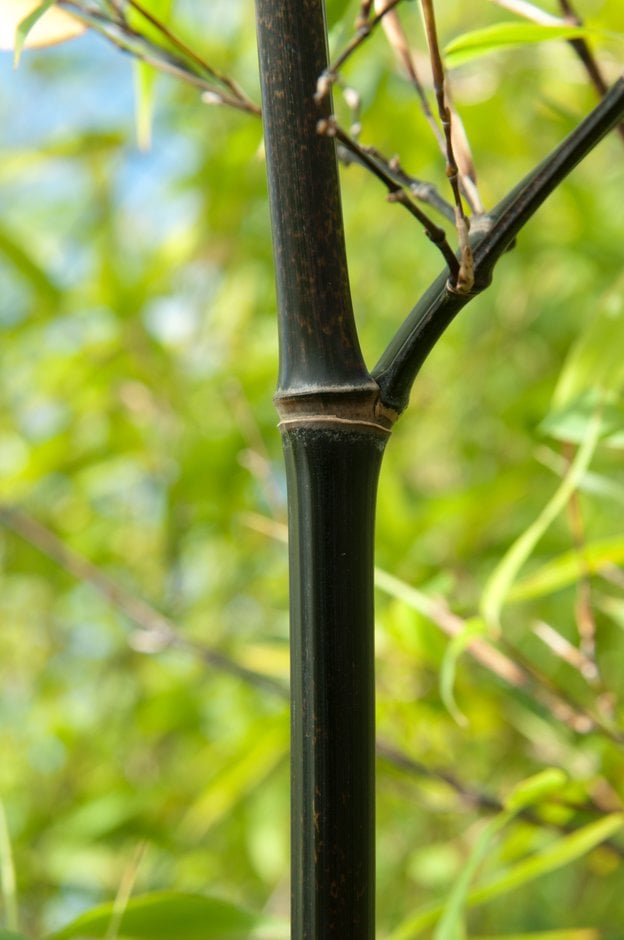Size
Ultimate height
2.5–4 metresTime to ultimate height
5–10 yearsUltimate spread
2.5–4 metresGrowing conditions
Moisture
Moist but well–drainedpH
Acid, Alkaline, NeutralColour & scent
| Stem | Flower | Foliage | Fruit | |
| Spring | Black Green | Green | ||
|---|---|---|---|---|
| Summer | Black Green | Green | ||
| Autumn | Black Green | Green | ||
| Winter | Black Green | Green |
Position
- Full sun
- Partial shade
Aspect
South–facing or West–facing
Exposure
Sheltered Hardiness
H5Botanical details
- Family
- Poaceae
- Native to GB / Ireland
- No
- Foliage
- Evergreen
- Habit
- Suckering
- Genus
Phyllostachys are attractive, large, evergreen bamboos with running rhizomes, although in cool temperate climates may initially behave like clump-forming genera. Canes grooved on alternate sides between the nodes, with usually two leafy branches at each node
- Name status
Correct
- Plant range
- China
How to grow
Cultivation
Grow in fertile, humus-rich, moist but well-drained soil, in full sun or partial shade. Protect from cold drying winds. In a container grow in a peat-free, loam-based compost and feed with a balanced liquid fertiliser on a monthly basis during the growing season. May remain clump-forming in poor or dry soils but can become invasive in warm, moist or favourable conditions; see bamboo control and bamboo cultivation
Propagation
Propagate by division in spring
Suggested planting locations and garden types
- Architectural
- Patio and container plants
- Hedging and screens
Pruning
Remove weak, dead, damaged or spindly stems in spring and thin to show off stems to best effect. Cut out any flowering shoots promptly to discourage more from forming - see bamboo cultivation
Pests
May be susceptible to slugs
Diseases
Generally disease-free
Love gardening
Sign up to receive regular gardening tips, inspiration, offers and more
View our Privacy Policy
Get involved
The Royal Horticultural Society is the UK’s leading gardening charity. We aim to enrich everyone’s life through plants, and make the UK a greener and more beautiful place.
